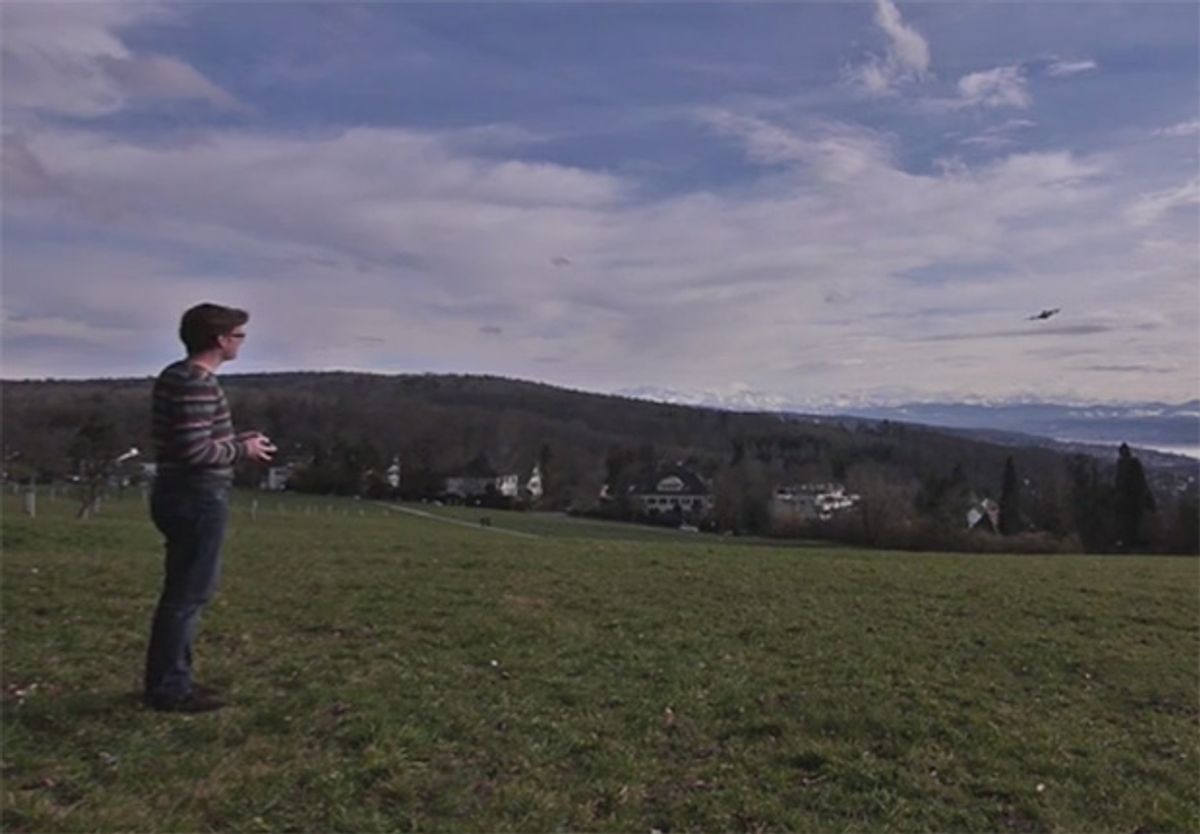I apologize for the back-to-back quadcopter failure posts (what are the odds of that happening, right?), but this was just too cool to not immediately tell you about. ETH Zurich has taken that quadcopter fail recovery software that they've been working on that can completely shrug off the loss of an entire propeller, and pulled it out of any sort of controlled or motion capture environment to show that it works in that real world place that we're always going on about. And it's amazing.
In this video we have a pilot fly the quadrocopter. The algorithm is executed on the quadrocopter's onboard micro-controller, and the only sensors required are the quadrocopter's angular rate gyroscopes.
We use blinking LEDs, mounted on the quadrocopter's arms, to indicate a virtual yaw angle, so that the pilot can control the vehicle with the same remote control commands after the failure. As an alternative to the LED system, an onboard magnetometer could be used to track the vehicle's yaw angle. Alternatively, using more sophisticated algorithms, the system could be made to work using only the rate gyroscopes.
The failsafe controller uses only hardware that is readily available on a standard quadrocopter, and could thus be implemented as an algorithmic-only upgrade to existing systems. Until now, the only way a multicopter could survive the loss of a propeller or motor is by having redundancy (e.g. hexacopters, octocopters). However, this redundancy comes at the cost of additional structural weight, reducing the vehicle's useful payload. Using this technology, (more efficient) quadrocopters can be used in safety critical applications, because they still have the ability to gracefully recover from a motor/propeller failure.
This fail recovery process is completely transparent to the user flying the quadcopter: you don't even have to flick a switch, and the vehicle responds to all of the same control inputs. You're probably not going to manage quite as soft of a landing as you would otherwise, but the point is that the quadcopter doesn't just immediately crater itself: it can be steered, hover, and land.
While we haven't seen it on video yet, the software can apparently handle the failure of more than one motor. From our original post:
This new approach allows such a vehicle to remain in flight despite the loss of one, two, or even three propellers. Having lost one (or more) propellers, the vehicle enters a continuous rotation — we then control the direction of this axis of rotation, and the total thrust that the vehicle produces, allowing us to control the vehicle’s acceleration and thus position.
Even if the vehicle can no longer produce sufficient thrust to support its own weight, this technology would still be useful: one could, for example, try to minimize the multicopter’s velocity when it hits the ground, or steer the multicopter away from dangerous situations such as water, or people on the ground.
We'd obviously love to see that, but even as-is, this is an incredibly valuable tool, especially as people try to get quadcopters to do stuff commercially. And even for hobbyists, it'd be great to not have to worry quite so much about a hardware failure utterly destroying your vehicle. The best news of all is that this is just a bit of very clever (and very patent-pending) software, meaning that it has the potential to make any sort of multi-rotor flying platform instantly (and relatively cheaply) much less catastrophically crashy.
Thanks Markus!
[ Mark Muller ]
Evan Ackerman is a senior editor at IEEE Spectrum. Since 2007, he has written over 6,000 articles on robotics and technology. He has a degree in Martian geology and is excellent at playing bagpipes.



